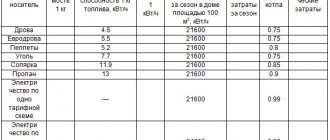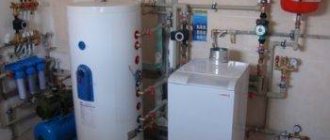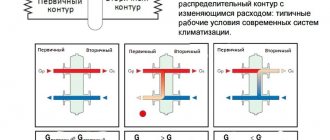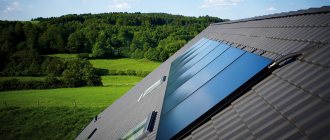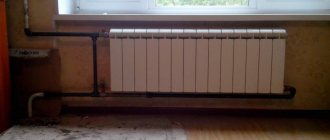- home
- >Alternative electricity - articles
>
Welcome to the website e-veterok.ru
, today I want to tell you about how many solar panels you need for a house or cottage, a private house, etc. This article will not contain formulas or complex calculations, I will try to convey everything in simple words that are understandable to any person. The article promises to be quite large, but I think you will not waste your time, leave comments under the article.
The most important thing to determine the number of solar panels is to understand what they are capable of, how much energy one solar panel can provide, in order to determine the required quantity. You also need to understand that in addition to the panels themselves, you will need batteries, a charge controller, and a voltage converter (inverter).
Calculation of solar panel power
To calculate the required power of solar panels you need to know how much energy you consume.
For example, if your energy consumption is 100 kWh per month (readings can be viewed on the electricity meter), then accordingly you need solar panels to generate this amount of energy. The solar panels themselves produce solar energy only during daylight hours. And they deliver their rated power only when there is a clear sky and the sun's rays are falling at right angles. When the sun falls at angles, power and electricity production drops noticeably, and the sharper the angle of incidence of the sun's rays, the greater the drop in power. In cloudy weather, the power of solar panels drops by 15-20 times, even with light clouds and haze, the power of solar panels drops by 2-3 times, and all this must be taken into account.
When calculating, it is better to take the working time, during which the solar panels operate at almost full power, equal to 7 hours, this is from 9 am to 4 pm. Of course, in the summer the panels will work from dawn to dusk, but in the morning and evening the output will be very small, in volume only 20-30% of the total daily output, and 70% of the energy will be generated in the interval from 9 to 16 hours.
Thus, an array of panels with a capacity of 1 kW (1000 watts) will produce 7 kWh of electricity during the period from 9 to 16 hours on a sunny summer day, and 210 kWh per month. Plus another 3 kW (30%) for the morning and evening, but let this be a reserve since partly cloudy weather is possible. And our panels are installed permanently, and the angle of incidence of the sun's rays changes, so naturally the panels will not deliver their power at 100%. I think it’s clear that if the array of panels is 2 kW, then the energy production will be 420 kWh per month. And if there is one 100-watt panel, then it will provide only 700 watt-hours of energy per day, and 21 kW per month.
It’s not bad to have 210 kWh per month from an array with a capacity of only 1 kW, but it’s not that simple
Firstly
It’s not possible that all 30 days in a month are sunny, so you need to look at the weather archive for the region and find out approximately how many cloudy days there are by month. As a result, probably 5-6 days will definitely be cloudy, when solar panels will not generate half of the electricity. This means you can safely cross out 4 days, and the result will no longer be 210 kWh, but 186 kWh
Also
you need to understand that in spring and autumn the daylight hours are shorter and there are much more cloudy days, so if you want to use solar energy from March to October, then you need to increase the array of solar panels by 30-50%, depending on the specific region.
But that is not all
, there are also serious losses in the batteries and in the converters (inverter), which also need to be taken into account, more on this later.
About winter
I won’t say that for now, as this is a very deplorable time for electricity generation, and then when there is no sun for weeks, no array of solar panels will help, and you will either need to be powered from the network during such periods, or install a gas generator. Installing a wind generator also helps well; in winter it becomes the main source of electricity generation, but unless, of course, your region has windy winters, and the wind generator is of sufficient power.
Where can I buy
You can purchase solar panels either in a specialized store or online in an online store. In the second case, the budget option for purchasing products on the Aliexpress website deserves special attention. For some panels there is an option for shipment from a warehouse in the Russian Federation; they can be received as quickly as possible; to do this, when ordering, select “Delivery from the Russian Federation”:
| Mini solar panel with voltage from 2 to 12 Volts | 100 Watt 12 Volt Flexible Solar Panel | 300 Watt Flexible Solar Panel Set |
| Dokio Portable Solar Panel 18V 200W | Lamp with built-in solar panel power supply | Polycrystalline solar panel 40 Watt, 18 Volt |
Calculation of battery capacity for solar panels
This is what a solar power plant looks like inside a house
>
Another example of installed batteries and a universal controller for solar panels
>
Minimum battery capacity
, which simply must be like this in order to survive the dark time of the day. For example, if you consume 3 kWh of energy from evening to morning, then the batteries should have such a reserve of energy.
If the battery is 12 volts 200 Ah, then the energy in it will fit 12 * 200 = 2400 watts (2.4 kW). But batteries cannot be discharged to 100%
. Specialized batteries can be discharged to a maximum of 70%; if more, they quickly degrade. If you install regular car batteries, they can be discharged to a maximum of 50%. Therefore, you need to install twice as many batteries as required, otherwise they will have to be replaced every year or even earlier.
Optimal battery capacity reserve
This is the daily energy reserve in the batteries. For example, if your daily consumption is 10 kWh, then the working capacity of the battery should be exactly this. Then you can easily survive 1-2 cloudy days without interruptions. Moreover, on ordinary days during the day the batteries will only be discharged by 20-30%, and this will extend their short life.
Another important thing to do
This is the efficiency of lead-acid batteries, which is approximately 80%. That is, when a battery is fully charged, it takes 20% more energy than it can later release. The efficiency depends on the charge and discharge current, and the higher the charge and discharge currents, the lower the efficiency. For example, if you have a 200Ah battery, and you connect a 2kW electric kettle through an inverter, then the voltage on the battery will drop sharply, since the battery discharge current will be about 250Amps, and the energy efficiency will drop to 40-50%. Also, if you charge the battery with a high current, the efficiency will sharply decrease.
Also, the inverter (energy converter 12/24/48 to 220V) has an efficiency of 70-80%.
Taking into account the losses of energy received from solar panels in batteries, and in converting direct voltage into alternating voltage 220V, the total losses will be about 40%. the array of solar panels must also
to compensate for these losses.
But that's not all the losses
.
There are two types of solar battery charge controllers, and you can’t do without them. PWM (PWM) controllers are simpler and cheaper, they cannot transform energy, and therefore solar panels cannot transfer all their power to the battery, a maximum of 80% of the rated power. But MPPT controllers monitor the maximum power point and convert energy by reducing the voltage and increasing the charging current, ultimately increasing the efficiency of solar panels up to 99%. Therefore, if you install a cheaper PWM controller, then increase the array of solar panels by another 20%
.
TOP 5: One-Sun 30M 30 watt 12V Monocrystal
Options
- Power – 30W;
- Type – monocrystal;
- Voltage – 12V;
- Grade A class;
- Cable 900 mm long and 2.5 mm2 cross-section;
- Voltage (at peak power) – 18 V;
- Diodes – 1 pc.;
- Elements size – 136x39;
- Temperature range - minus 40 plus 85;
- Max and no-load voltage – 1000 and 21.6 V;
- Current at peak power and short circuit – 1.67 and 1.77 A;
- Number of module cells – 36 pcs.;
- Frame – anodized aluminum;
- Weight – 3.5 kg;
- Dimensions – 52.5x44.5x2.5 cm.
Description
This module consists of the same high Grade A quality elements, so the design performance is high.
Peculiarities
- The elements belong to the first quality category;
- Power tolerance is positive (0 ~ +3 W), which guarantees rated power;
- Only components from trusted brands are used, while the price is kept at a relatively low level.
The warranty period is 10 years, because the manufacturer is confident in the quality. In addition, it is guaranteed that the power will remain at 90 for 10 years and will not fall below 85% for 25 years.
Price
Buying solar panels for your home is easy:
| Where can I buy | Price |
| https://eco50.ru/solnechnye-sistemy/solnechnye-batarei/solnechnaya-batareya-one-sun-30m-30-watt-12v-monokristall/ | 2500 rubles |
| https://solar.samsvoboden.ru/solnechnye-batarei/solnechnaya-batareya-os-30m/ | 2160 rubles |
| https://www.42unita.ru/catalog/solnechnye_paneli/Solnechnaya_panel_One_Sun_30M_d09?r1=yandext&r2=&utm_campaign=98012061&utm_content=price_130844_solnechnaya_batareya&utm_medium=referral&utm_source=ekb.pulscen.ru &utm_term=55947234_20180626111832 | 2050 rubles |
| https://realsolar.ru/27732.html | 2198 |
| https://solar.samsvoboden.ru/solnechnye-batarei/solnechnaya-batareya-os-30p/ | 1920 |
Calculation of solar panels for a private house or cottage
If you don’t know your consumption and are just planning, say, to power your dacha from solar panels, then consumption is calculated quite simply.
For example, you will have a refrigerator in your dacha, which according to its passport consumes 370 kWh per year, which means it will consume only 30.8 kWh of energy per month, and 1.02 kWh per day. Also light, for example, your light bulbs are energy-saving, say 12 watts each, there are 5 of them and they shine on average 5 hours a day. This means that per day your light will consume 12*5*5=300 watt*h of energy, and in a month it will “burn up” 9 kWh. You can also read the consumption of a pump, TV and everything else you have, add everything up and get your daily energy consumption, and then multiply by a month and get some approximate figure. For example, you get 70 kWh of energy per month, add 40% of the energy that will be lost in the battery, inverter, etc. This means that we need solar panels to generate approximately 100 kWh. This means 100:30:7 = 0.476 kW. It turns out that you need an array of batteries with a power of 0.5 kW. But such an array of batteries will only be enough in the summer; even in spring and autumn on cloudy days there will be power outages, so it is necessary to double the array of batteries.
As a result of the above, in brief, the calculation of the number of solar panels looks like this:
- accept that solar panels only work for 7 hours in summer at almost maximum power
- calculate your electricity consumption per day
- Divide by 7 and you get the required power of the solar array
- add 40% for losses in the battery and inverter
- add another 20% if you have a PWM controller, if MPPT then you don’t need it
Example: Consumption of a private house 300 kWh per month
, divide by 30 days = 7 kW, divide 10 kW by 7 hours, you get 1.42 kW. Let's add to this figure 40% of losses on the battery and in the inverter, 1.42 + 0.568 = 1988 watts. As a result, to power a private house in the summer, you need a 2 kW array. But in order to receive enough energy even in spring and autumn, it is better to increase the array by 50%, that is, another plus of 1 kW. And in winter, during long cloudy periods, use either a gas generator or install a wind generator with a power of at least 2 kW. More specifically, it can be calculated based on weather archive data for the region.
“100W” ≠ 100W
When we say that a solar panel has a power of 100W, then it produces such power at a solar radiation intensity of 1000W/m². Usually this intensity occurs in summer in clear weather, when the sun is at its zenith. Naturally, manufacturers do not run outside with a solar panel every time; they test their power under certain laboratory conditions - STC (Standard Test Conditions) or so-called “standard test conditions”. These conditions are as follows:
- solar radiation intensity 1000 W/m²
- air temperature 25°C
- the sun's rays fall perpendicular to the solar panel
- wind speed is zero
- air mass 1.5
- some other criteria
Therefore, the actual power output of solar panels may vary depending on external weather conditions. When calculating, we typically underestimate solar panel output based on the difference between lab testing and your actual installation. If a 12V solar panel has a power of 100W, then that means instantaneous power. If we carry out measurements under STC conditions, we should get an output voltage of ~18V and a current of 5.55A. Power is the product of voltage and current (P=V*I), so 18V·5.55A = 100W.
Here you can even draw a small analogy with a car; power is like the speed of a car. If a car drives at a constant speed of 100 km/h, then in 1 hour it will travel 100 km. Same thing with the solar panel. To determine how much energy will be produced in a certain time, you need to multiply the number of watts by the number of hours. For example, in 1 hour 100W x 1h = 100Wh = 100Wh will be generated.
If we consider all this on a specific solar panel, then we can take the Delta SM 100-12P solar panel with an optimal operating voltage of 18.1V (Ump) and an optimal operating current of 5.52A. 18.1V x 5.52A = 99.91W (100W).
Cost of solar panels and batteries
>
Prices for solar panels and equipment now vary quite a lot, the same product can differ in price significantly from different sellers, so look cheaper, and from time-tested sellers. Prices for solar panels are now on average 70 rubles per watt, that is, an array of 1 kW batteries will cost about 70 thousand rubles, but the larger the batch, the greater the discounts and cheaper delivery.
High-quality specialized batteries are expensive; a 12V 200Ah battery will cost an average of 15-20 thousand rubles. I use these batteries, they are written about in this article. Batteries for solar panels Car batteries are half the price, but they need to be installed twice as much so that they last at least five years. Also, car batteries cannot be installed in residential areas as they are not sealed. Specialized ones with a discharge of no more than 50% will last 6-10 years, and they are sealed and do not emit anything. You can buy cheaper if you take a large batch; sellers usually give decent discounts.
The rest of the equipment is probably individual; inverters vary in power, sine wave shape, and price. Likewise, charge controllers can be as expensive as they come with all the functions, including communication with a PC and remote access via the Internet.



